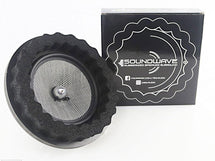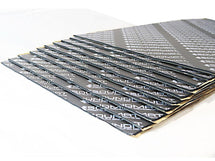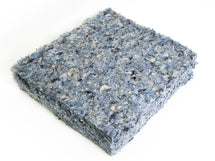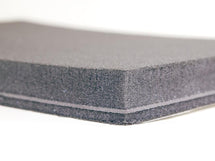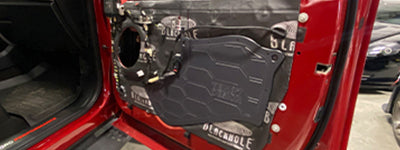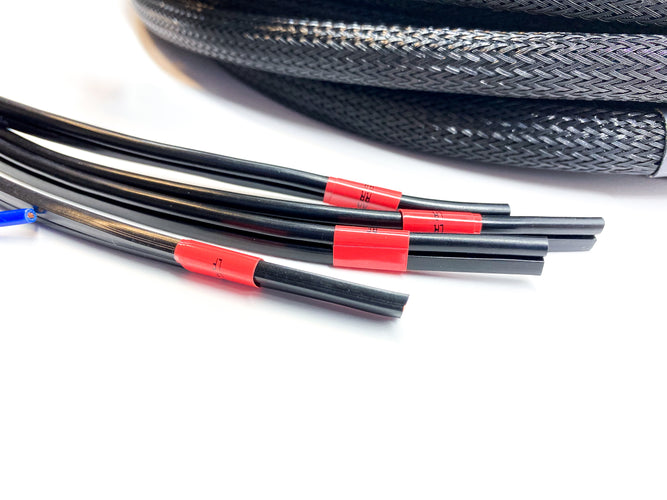
Short Answer: No
Medium Answer: If you are running over 1,000w to that speaker
Long Answer: See below
Here is the summary for those who do not want to read the entire post below: That puny 18 AWG speaker wire in your vehicle will handle 1000 watts of music before heating more than 40 degrees above its surroundings. So unless you are running 1000w to your door speakers, this is not needed. These additional funds can go towards what really matters and deliver better sounding stereo system, like speakers, amplification or a tuned DSP.
Post below by Tony D'Amore from D'Amore Engineering (World Famous Engineer in car stereo industry)
"What’s the max wattage you can send through 18 gauge wire to door speakers?
Short answer: more than your speaker can handle, don’t worry about it
Longest answer: This question needs to be answered with a very important question. How hot can the wire be allowed to get?
The limit of how much power “wattage” you can put through a wire is the point where it melts, typically catching on fire and then breaking open. This is what fuses do. Assuming you don’t want a fire, how hot do you want to allow the wire to get? Even 1 Watt will heat up the wire, it might be hard to measure such a small temperature change but it is there.
Ok let’s say we will allow it to heat up by 40 degrees F compared to its surroundings. Another important question: How long is the wire? This will also play a role, the longer the wire the more heat will be generated (albeit the more area it is spread out upon)
Another important question: What is the impedance of the speaker connected to it? A 2 ohm speaker will create double the heat in the wire compared to a 4 ohm speaker for the same given power.
Another question: What type of music is going to be played? Heavy bass music is going to create more heat than classical. A continuous sine wave will create about 5-8X the heat of a typical modern song.
Another important question: What is the speaker wire made from? Is it pure copper? In today’s world of everything fake, it’s very likely that the wire could be aluminum, coated with a thin layer of copper. Assumptions for questions above: 1. 40 degrees F 2. 15 feet 3. 4 ohms 5. Hip hop 6. Pure copper 15 feet of 18 gauge speaker wire is actually 30 feet long, to the electrons. As they will leave the amplifier through the “positive” wire and return to the amplifier on the “negative” wire.
So, 30 feet of 18AWG wire made from pure copper, sometimes called OFC. This has a resistance of 0.189 ohms. The copper has an equivalent diameter of 0.04 inches. Density of copper is about 5.1 oz per cubic inch. We have ((0.04)/2)^2 x pi x 30 x 12) = 0.45 cubic inches of copper x the density of 5.1 oz/ cubic inch = We have 2.3 ounces of copper.
The new question: So how much power will it take to raise the temperature of 2.3 ounces of copper by 40 degrees F? Specific heat capacity of copper = 0.38 J/g K. Converting to the units in the problem and solving the problem above = (0.38 Watt seconds * 2.3 * 28.3)) * 22 = 544 watt seconds.
Oops that brings up another question, for how long are we doing this? Now things get really interesting because we have heat building up in the wire over time, but we also have heat dissipating from the wire over time.
To solve this we need to answer about 5 other questions such as:
- Is the wire touching anything?
- How thick is the insulation?
- How much of the insulation is touching something else?
- What is the something else made of?
- Is there any moving air around the wire?
Ok the rabbit hole is getting deep. This is why when you ask an engineer a question such as the one above the engineer will probably just pause with a “ugh.. “ or “umm” or something like this. Don’t confuse this with the engineer thinking about how to solve the problem, the engineer is thinking about how do I answer this so it is understandable and useful to a non scientist.
Back to the original question and making more assumptions. Let’s assume the wire will get as hot as it’s going to get within 1 minute of use, after this it is dissipating enough heat to everything around it to maintain a constant temperature. 544 Watt seconds is the same amount of energy as 9 Watt minutes. So the intermediate answer is 9 Watts for one minute of heat in the wire will raise its temperature by 40 degrees F.
To answer the original question we have to know how much of the amplifiers power is going into the speaker, and how much is heating up the speaker wire. For that we can use a ratio of impedances. The speaker is 4 ohms, the wire is 0.189 ohms. So 4 / 0.189 = 21.1 The speaker will get 21.1 times the power that is being burned up in the wire.
So 9 watts in the wire = 190 watts in the speaker. Or a total of 199 watts. But wait, there’s more! This would be 199 watts of continuous sine wave power for one minute. Typical modern music contains about 1/5 the average power of a sine wave. So 199 x 5 = nearly 1000 watts of music.
Summary: That puny 18 AWG speaker wire will handle 1000 watts of music before heating more than 40 degrees above its surroundings. The question they should have asked: If I run 15 feet of 18 AWG speaker wire from my 1000 watt amp to my 4 ohm speaker, how much power will I lose in the wire? The answer: 45 watts.
This has been the longest answer by Tony D’Amore. Thanks for reading"
For more great content from D'Amore Engineering, be sure to subscribe to their YouTube Channel: https://www.youtube.com/c/DAmoreEngineering
